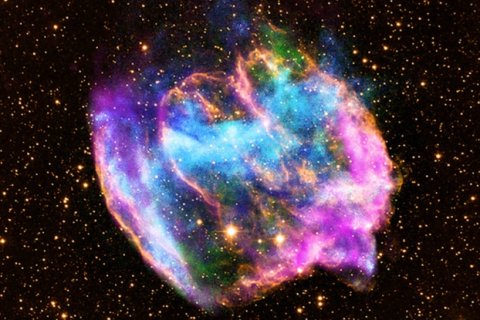New supernova mystery.

An international team of astronomers has discovered a star that has apparently gone supernova multiple times over a period of 50 years. The discovery throws mankind's basic knowledge about supernovas, the large explosions at the end of a star's life cycle, out the window.
The discovery began in 2014 in California, where astronomers at the Caltech Palomar Transient Factory noted a new explosion in the sky, which they deemed "iPTF14hls." This bit of alphabet soup refers to the intermediate Palomar Transient Factory (iPTF), a fully-automated, wide-field camera that scans the sky. The iPTF14ls was initially seen as a standard Type 2 supernova, common for stars between 8-40 times bigger than our own Sun.
Soon, though, it was apparent that iPTF14ls was "unlike other long-lived supernovae," according to a Caltech paper published a few months later. Type 2 supernovae are usually bright in the night sky for 100 days. But iPTF14ls shone brightly for more than 600 days, with at least five distinct peaks in its light curve, as opposed to the singular peak common in Type 2s followed by a steady decline in brightness. "Such behavior has never been seen before for any type of supernova and it challenges all existing explosion models," the paper said.
Then, things got stranger. A search through the archives revealed that in 1954, an explosion had been documented in the exact same location as iPTF14hls. This star exploded over 50 years ago, survived, and somehow exploded again in 2014.
"This supernova breaks everything we thought we knew about how they work," said lead author of the new paper discussing the revelation in Nature, Iair Arcavi of University of California Santa Barbara and Las Cumbres Observatory.
Some custom tech was crucial to the discovery. Nick Konidaris of Carnegie Science, who worked on the paper, built what he calls a SED Machine. Both a spectrograph, which splits light into common wavelengths so they can be studied, and an imager, the SED Machine was "ideal for classifying supernovae," Konidaris wrote in an introduction to the machine.
Now, he says in a press release that "I never expected it would help us analyze an explosion as strange as this zombie star."
So what's going on with this continual massive explosion? It's hard to say. But it shows how space still has so many mysteries left for us to solve.